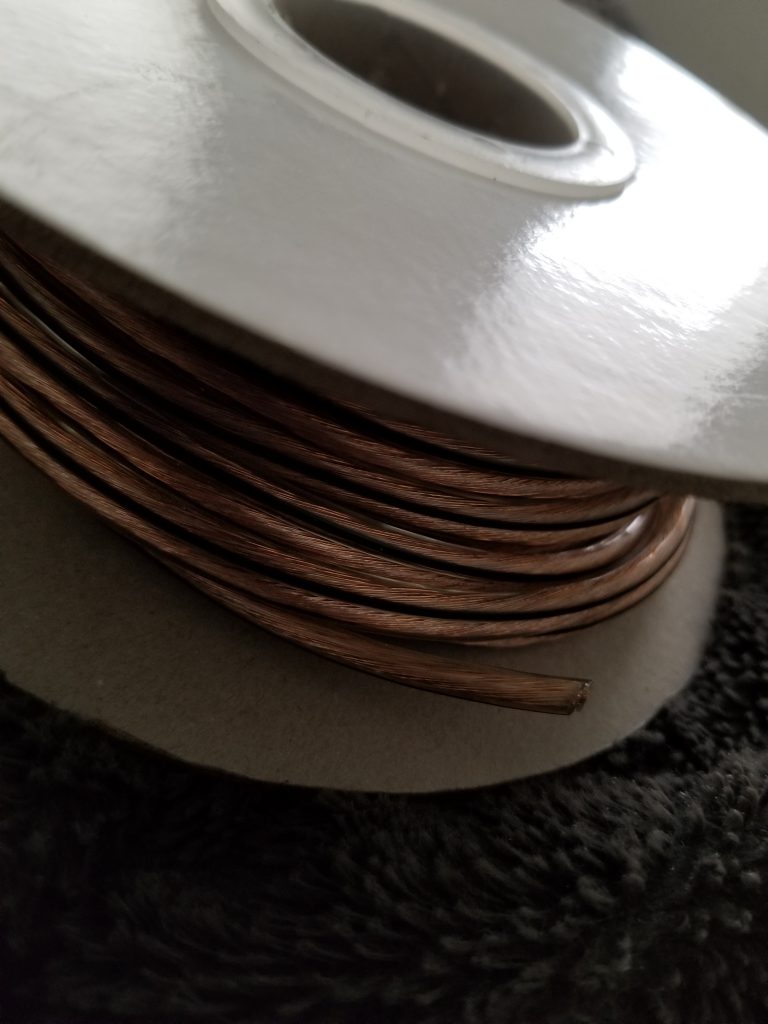Hiding Speaker Wire Solutions
Hiding Speaker Wire Solutions

Just from the title alone, I’m sure you’re already aware what this article is going to be about; hiding speaker wire solutions!
With all that goes into creating that perfect home theater, it can be pretty easy to overlook a lot of the smaller things that go into it as well. From the height of your speaker, to the color accuracy of your display, it’s essentially an entire world in of itself.
And if you just recently set up a new system (congrats on that) it’s likely you noticed something else too, something rather concerning; the wires.
Yes the wires, the lifeline of your entire setup.
As great as they are, you’ve probably realized by now that they’re, quite simply, in the way.
Tripping over them definitely isn’t fun, (I would know) and neither is worrying about accidentally pulling something over.
Not only that, but if it can make a living room or theater room look unsightly and who wants that?
Hiding home theater wires is the focus, so I wanted to share with you today a few of the ways you can tidy things up so everything is clean and professional looking.
Do note you’ll have to unplug your equipment before you do this (and possibly rewire depending on what method you plan on using)
Anyway without further ado, let’s get into it.
Use A Wire Tacker & Cover Them With Matching Paint
Cover Them With A Carpet /Rug
Placing Them Under The Floor Itself
Place Them By A Light Strip
Use Flat Speaker Wire
Use A Cable Cover/Cable Raceway
Place Them Under Crown/ Chair Rail Molding
Install Them Through The Wall
Use Clear Tape
Use A Wire Tacker & Cover Them With Matching Paint

Let’s say you want to run your speaker wires along the wall, but you’re worried about it looking somewhat ugly.
In this case, what you could always do is paint over them in matching paint to the wall they’re being placed on.
I do want to say if you’re renting your place by the way, make sure it’s okay for you to actually do something like this prior.
Now if you haven’t done so already, you’ll want to do some measuring beforehand to see what length of wire you’ll need to run from the speaker to the receiver, so I’d recommend doing this first.
After you’ve figured out the length and cut the wire, you’ll need a way to actually pin them to the wall.
One thing that works exceptionally well is using a wire tacker to do so.
You might initially think this would hurt the wires, but that’s not the case at all. They actually have staples specifically designed for each different gauge wire so that that isn’t the case.
One wire tacker I would recommend to you is the Arrow Fastener T59 Wiring Tacker along with these Arrow Fastener Wire Staples.
Once you’ve secured the wire to the wall (which you might need someone to else to hold up) you can then paint over it so that it blends in, making it much less of an eye sore.
Cover Them With A Carpet /Rug

For those of you out there who simply don’t have the time, or energy to be doing some of the more elaborate things on this list, (I sympathize with you) here’s a super fast and easy fix for you; cover them with a rug!
If you have wires that happen to be running across doorways, and places with a lot of foot traffic, then it’s very possible for you to trip over them.
Worse still, is it’s possible for someone to trip and pull a speaker down, which is something I’m sure you’d like to avoid.
So by placing a small throw rug on top of spots like these, they’ll not only be out of the way for the most part, but you also won’t have to worry about any accidental mishaps occurring.
Plus, there’s always the added bonus of it adding a sense of style to the room which is always nice.
Obviously it won’t be able to cover every inch of the wire, but it’ll cover enough to where it isn’t a problem.
Besides the rug, something else I would recommend to go along with it would be a rug pad which would help it not move around everywhere when you walk across it.
Indoor Rug
Rug Pads
Placing Them Under The Floor Itself
Here’s a more involved method if you’re looking for a more permanent, all around solution. By running them underneath, or between your carpet/hardwood floor & even the baseboard, you’ll be able to completely conceal them.
How easy this process is for you is going to depend on how tight the space is between both of them.
If you happen to find that the space is too tight for this to be done normally, I’ve found that lightly nudging it along with a small flat headed screwdriver typically does the trick. You don’t want to be too rough obviously, just enough so that it slides in without damaging or ripping.
But for this, while not completely necessary, you may want someone else to assist you. That way, one could pull the carpet up, and the other could place the wire.
Place Them By A Light Strip

This is more on the cosmetic side of the spectrum. If you don’t like the look of bare wire running along the floor, what you can do is place LED light strips right beside it to help make it a lot less noticeable.
The awesome part about these is that they’re usually fully customizable, meaning you can change the color, length, etc. to whatever works best for you; some are even fully controllable by phone! How cool would it be to changing the lighting in a room with just a cell phone?
Plus, they can also add a sense of decorum to the room that definitely helps when it comes time for movie night. One awesome one that I like would have to be the YiHong LED Light Strip RGB Strip.
Not only is it a flat adhesive based light strip that can be placed anywhere and is super easy to install; it also works with your mobile so you can then customize the light color to anything you want. It even has smart assistant compatibility.
Seriously, how cool is that?
Use Flat Speaker Wire
Here’s another one of my favorite options; using flat speaker wire! Yes you heard that right. There’s a thing called flat speaker wire. Like the name suggests, it still acts as normal speaker wire, it’s just completely flat with the added benefit of being able to stick to any surface.
The advantage of this choice is that you’re given more freedom, since you can run the wire exactly how you want to without a lot of the extra work. Plus you never have to worry about damaging it since it runs flush with whatever surface it sticks to.
This is perfect for those tight spots where space is an issue. Heck if this is the case, you could even get creative and combine it with one of the previous tips by running it under the carpet and into the receiver; making it as least intrusive and minimalist as possible.
Now the best flat speaker wire in my opinion would have to be the Sewell Ghost Wire, Super Flat Adhesive Speaker Wire. That’s because of the fact that it’s easy to use, looks great, and most importantly, I’ve found it to actually be durable which is certainly helpful in my opinion.
You’ll also need what’s known as a terminal block which is basically where the wires go, regular 16 gauge speaker wire to connect to the terminals, and banana plugs that go into your receiver. Here’s how to connect it should you use this method along with how to actually strip the speaker wire itself.
https://sewelldirect.com/learning-center/hide-speaker-wire-with-sewell-ghost-wire
https://easyhometheater.net/how-to-set-up-a-home-theater#wire
Use A Cable Cover/Cable Raceway
Using cable raceways are another great option to hide any exposed wires.
What are they?
Basically think of them as elongated plastic covers that your wires go through to be hidden. They’re usually ran around doorways and along walls so that they’re out of the way, and can be painted to further blend in.
These are especially great to use if you’re someone who’s concerned with maintaining the aesthetic of your home, since these can be added to seamlessly to hide any unsightly wiring.
There are different types of these as well including ones that have open or closed latches that help hold the wires in place. Here’s a good one to use if you plan on going that route.
Wiremold Cable Management Cord Mate II
Alternatively, you can also take the more temporary, but still related route of using cable covers as well. These are typically made of rubber, and are extremely effective in protecting wires; even when weight is applied over them.
This makes them an attractive option for places where there would be a lot of foot traffic, since they’re flatter on the bottom which would make it hard to move around. Wire covers also tend to have the most traction on hardwood flooring, but they still work great on carpets too.
On top of that, you have plenty to choose from since they come in all kinds of sizes and types.
Cord Covers
Place Them Under Crown/ Chair Rail Molding
Crown molding is basically the plastic piece that commonly runs across the tops of walls and adds character to a room.
Its original purpose was to cover gaps within the walls, but it eventually became an aesthetic piece.
Chair rail molding is pretty much the same thing except it’s usually located towards the bottoms of walls.
What you can do to make wiring more discrete, is run them under the molding so that it gives the appearance that it isn’t even there which is pretty cool in my opinion. This option again, is extremely useful if you prioritize maintaining a clean looking movie room.
Here’s a link on how to do exactly that along with an awesome adhesive molding that may make things easier.
The process basically involves tacking the wire onto the wall then placing the molding over it. It’s a little involved so I’d recommend setting some time aside to do this.
Install Them Through The Wall
Now this is of course, the most involved option on the list; running wires through the wall. Again if you’re renting your place, then I’d highly suggest getting clearance from your landlord first if you do attempt something like.
But this is an option for those of you looking for more of a permanent solution; especially if you plan on using things like ceiling speakers and such.
To be honest, unless you have extensive DIY/contracting knowledge, I’d highly recommend hiring a professional to do this for you as the process can be quite extensive.
However do note that if you are going to attempt this method yourself, you’ll likely need a friend or two to help along with a lot of time and patience.
Use Clear Tape

This option is obviously a more temporary choice, but hey, it does the job. If you have an event coming up (such as a party), and you have no time to implement a more permanent fix, then for the time being, some clear tape could always do the job.
Taping the wires up against the wall or against the floor can be an easier way to ensure that they’re out of the way.
Final Thoughts
Hopefully you’ve enjoyed this article on hiding speaker solutions. I’m quite sure that there are even more out there, (let’s be honest, there’s some really creative people) but these are just a few of the top ways you can hide any unsightly wires. If you have any questions at all, don’t hesitate to ask.
Until next time, make it easy, keep it simple.
About Me

Jay
Hey everyone it’s nice to meet you. I'm Jay, writer & founder of the site Easy Home Theater. I've been with this hobby of home entertainment for many years now. I decided to create this site to be a helpful resource, and share everything that I've learned from personal experience with you. I also happen to be a huge gamer, lover of all things tech related, and a major fitness buff (love weightlifting)
Contact: Contact Jay
Facebook: https://www.facebook.com/Easyhometheater/
X: https://x.com/easyhometheater
Pinterest: https://www.pinterest.com/easyhometheater/pins/
Instagram: https://www.instagram.com/easyhometheater/
Followit: https://follow.it/easy-home-theater
Bluesky: https://bsky.app/profile/easyhometheater.bsky.social
10 Comments so far:
-
-
This is true, however with most home theater speakers, they aren’t compliant with Bluetooth, at least not yet anyway.
-
-
Wow, these are all great ideas for hiding speaker wire. I have ran some under the rug, under the carpet and along the bottom edge. I like the idea of painting the ones running up the wall. This I will have to do! Thanks for sharing.
-
No problem at all. And yeah, I personally like the painting method as well.
-
-
Nice. I need to do that with the cable TV wires. I’ll sure use some of the ideas you gave. Thanks.
-
Awesome dude. Let me know how it goes.
-
-
Well, thanks to your very thorough post I am going to have to buy my dad some of this magical flat speaker wire you mentioned!
I had absolutely no idea this existed and I think it’s pretty cool. My dad is currently using the “throw a rug over it and hope for the best” approach, but as my nephew gets older I am definitely concerned he will find the wires and play with them.
Thank you for saving us from a potential safety hazard and introducing me to a cool product. Great work!
-
Yeah that’s definitely not a good thing lol, so making sure that they’re out of the way, or even getting flat speaker wire like you said, is certainly a good idea.
-
-
These are great tips to hide your wires. Some I never thougt about…:) Thank you for sharing
-
No problem at all. Let me know if you have any questions.
-







While all these are effective methods, I find them to be completely unnecessary nowadays. With internet and bluetooth technology, you no longer need wires of any type. Just connect and go.